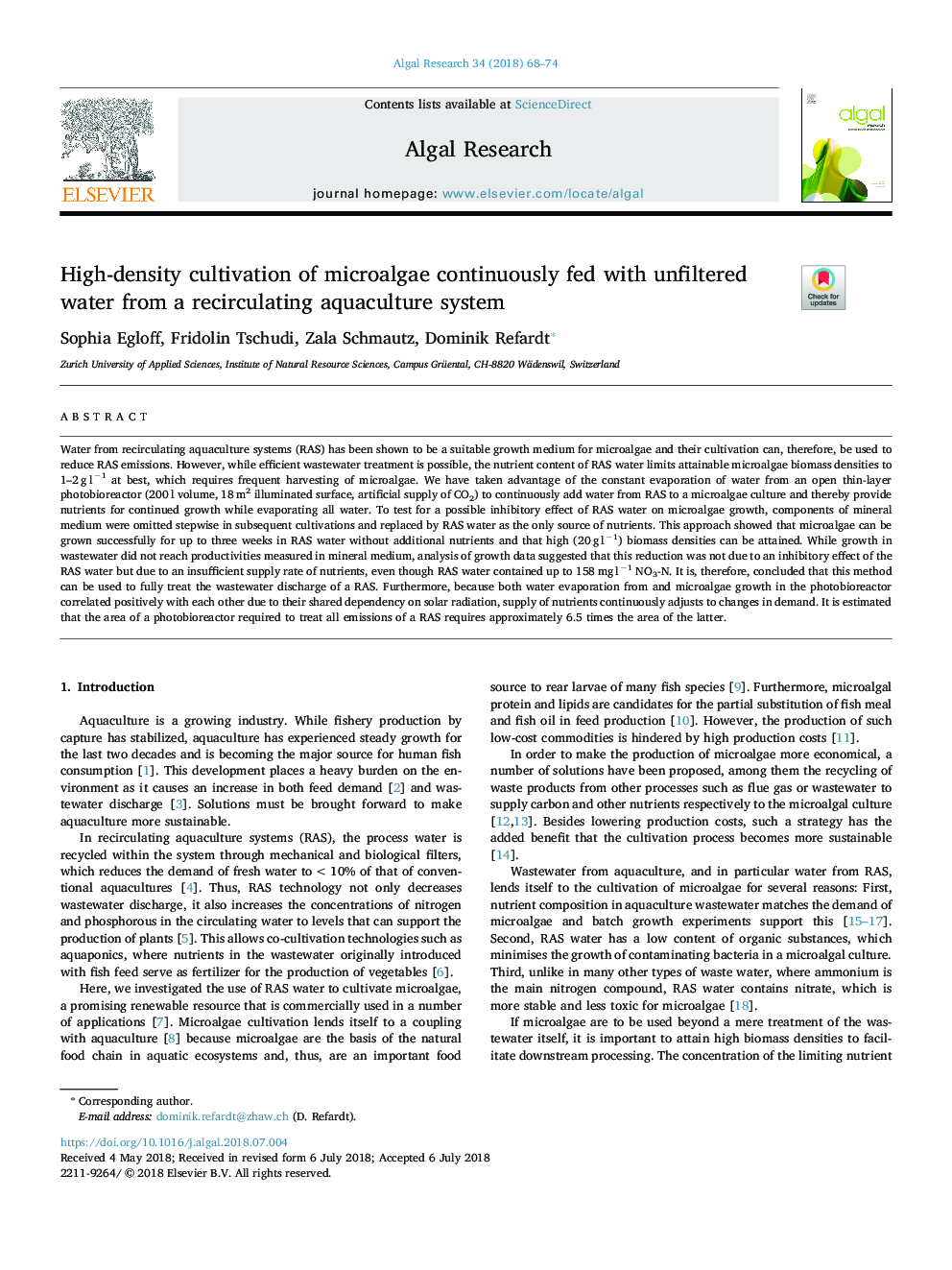| کد مقاله | کد نشریه | سال انتشار | مقاله انگلیسی | نسخه تمام متن |
|---|---|---|---|---|
| 8085686 | 1521799 | 2018 | 7 صفحه PDF | دانلود رایگان |
عنوان انگلیسی مقاله ISI
High-density cultivation of microalgae continuously fed with unfiltered water from a recirculating aquaculture system
ترجمه فارسی عنوان
کشت با تراکم بالا از میکروالگوها به طور مداوم با آب نوشیدنی از یک سیستم آبزی پرورش مجدد تغذیه می شود
دانلود مقاله + سفارش ترجمه
دانلود مقاله ISI انگلیسی
رایگان برای ایرانیان
موضوعات مرتبط
مهندسی و علوم پایه
مهندسی انرژی
انرژی های تجدید پذیر، توسعه پایدار و محیط زیست
چکیده انگلیسی
Water from recirculating aquaculture systems (RAS) has been shown to be a suitable growth medium for microalgae and their cultivation can, therefore, be used to reduce RAS emissions. However, while efficient wastewater treatment is possible, the nutrient content of RAS water limits attainable microalgae biomass densities to 1-2â¯gâ¯lâ1 at best, which requires frequent harvesting of microalgae. We have taken advantage of the constant evaporation of water from an open thin-layer photobioreactor (200â¯l volume, 18â¯m2 illuminated surface, artificial supply of CO2) to continuously add water from RAS to a microalgae culture and thereby provide nutrients for continued growth while evaporating all water. To test for a possible inhibitory effect of RAS water on microalgae growth, components of mineral medium were omitted stepwise in subsequent cultivations and replaced by RAS water as the only source of nutrients. This approach showed that microalgae can be grown successfully for up to three weeks in RAS water without additional nutrients and that high (20â¯gâ¯lâ1) biomass densities can be attained. While growth in wastewater did not reach productivities measured in mineral medium, analysis of growth data suggested that this reduction was not due to an inhibitory effect of the RAS water but due to an insufficient supply rate of nutrients, even though RAS water contained up to 158â¯mgâ¯lâ1 NO3-N. It is, therefore, concluded that this method can be used to fully treat the wastewater discharge of a RAS. Furthermore, because both water evaporation from and microalgae growth in the photobioreactor correlated positively with each other due to their shared dependency on solar radiation, supply of nutrients continuously adjusts to changes in demand. It is estimated that the area of a photobioreactor required to treat all emissions of a RAS requires approximately 6.5 times the area of the latter.
ناشر
Database: Elsevier - ScienceDirect (ساینس دایرکت)
Journal: Algal Research - Volume 34, September 2018, Pages 68-74
Journal: Algal Research - Volume 34, September 2018, Pages 68-74
نویسندگان
Sophia Egloff, Fridolin Tschudi, Zala Schmautz, Dominik Refardt,
